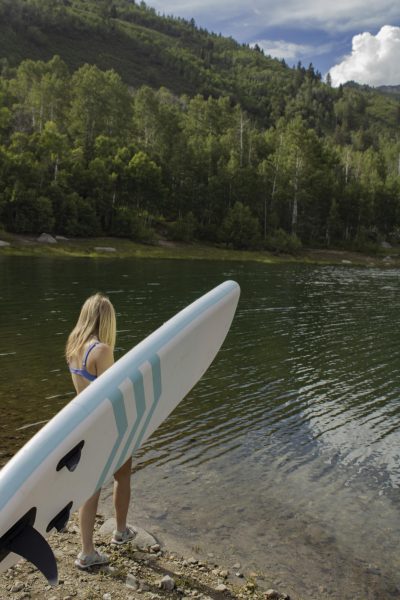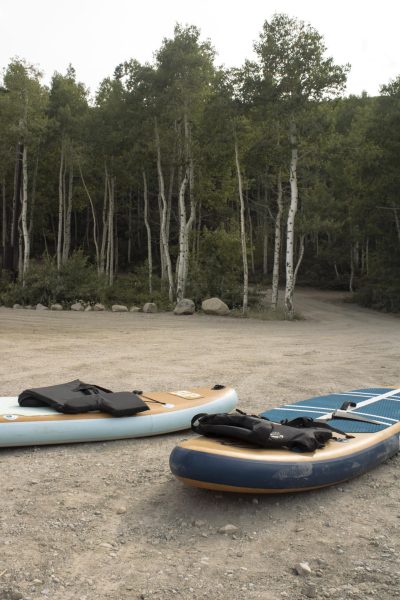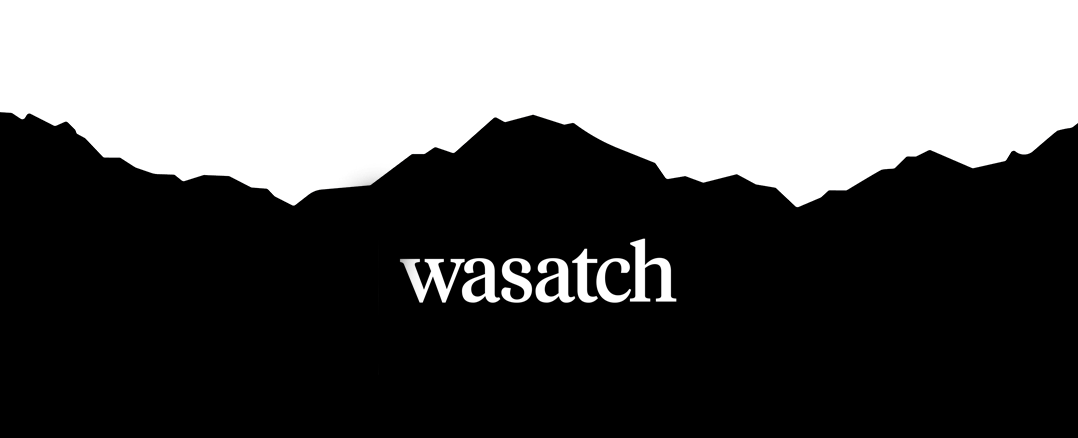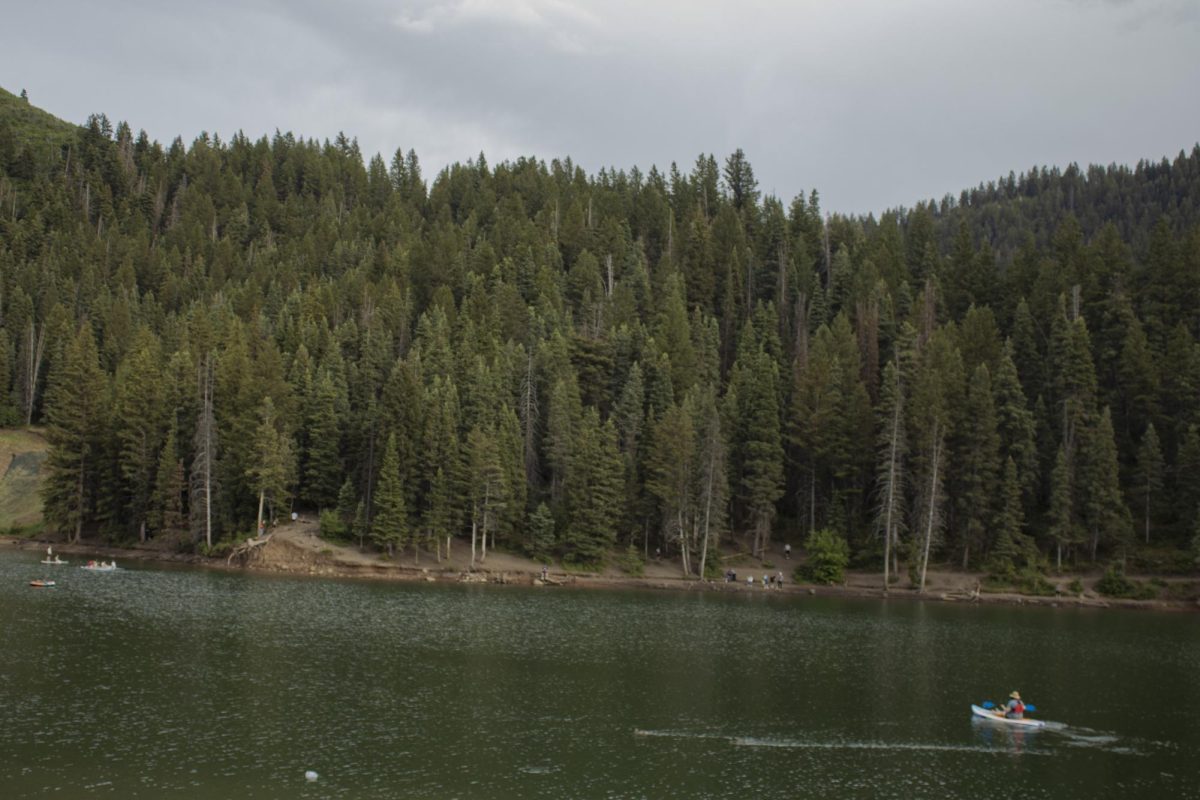Nothing brings me more peace and comfort than laying flat on my paddleboard in the middle of a lake. Listening to the soft breeze through the trees and feeling the cool water on my fingertips. Whether you’re one to relax on a paddle board or determined to paddle around the entire lake, paddleboarding itself has become increasingly more popular. It’s even gotten a nickname, SUP which stands for Stand Up Paddleboard or ISUP for Inflatable Stand Up Paddleboards.
History of paddleboarding:
Paddleboarding’s origins can be traced back to a handful of places, Africa, South America, and possibly some Polynesian cultures according to the National Marine Sanctuary Foundation. It’s believed people used wooden paddleboards as transportation, and possibly for recreation as well. The first modern paddleboard was created around the 1920s, but it wasn’t until the 1990s when it took off. Today it is considered the world’s fastest growing water sport.
Paddleboarding, especially inflatable paddleboards, has grown significantly due to its accessibility. Inflatable paddleboards make it incredibly easy to transport to and from lakes, reservoirs, ponds, rivers, etc. Inflatable paddleboards also help prevent the hassle of strapping a watercraft on the top of your car, or towing them behind you. paddleboards allow for people to stand, kneel, or sit offering a range of comfort vs control. I’ve even witnessed people putting lawn chairs on their paddleboards! The accessibility and diversity of paddleboards allows them to go in almost any water source for any occasion.

Benefits:
Paddleboarding engages our core and improves our balance. A research study from the National Library of Medicine found that regular paddleboarding can have cardiovascular, musculoskeletal, and psychological benefits. Overall, paddleboarding is a fun and easy way to improve our core and health.
Tips/Requirements for paddleboarding:
First, let’s talk about Utah’s Laws. Utah requires each vessel, including paddle boards, to carry at least one coast guard approved life jacket per person. Anyone under the age of 12 must wear a life jacket at all times. It is recommended for everyone to wear life jackets, but those above the age restriction must have it attached to their paddleboard. You also need a whistle, which I recommend attaching to your life jacket, in case you need to alert others for help.
The DWR (the Utah Division of Wildlife Resources) requires those with paddleboards and any other watercraft in Utah to complete the Mussel-aware boater program, a course that teaches you how to properly maintain your watercraft to protect Utah’s waters. The course takes about 30 minutes and needs to be completed annually.
Be aware of those around you, our public waters are meant to be shared. If you see others fishing, give them a good distance and stay away from their fishing lines. Be aware of motorized watercraft, and if there are buoys stay inside them.
Before any water recreation activities, it is important to check algae levels, especially in man made bodies of water. Sometimes, algae blooms can release toxins, and harmful algal blooms can cause rashes, cramps, fevers, and other serious health concerns. You can visit the Utah Department of Environmental Quality website to check the conditions in most Utah bodies of water before visiting.
Different gadgets can help improve your paddleboarding experience. I recommend bringing a dry bag, and/or a waterproof phone pouch to ensure phones, keys, and other belongings stay safe and dry. I also recommend a SUP leash, this straps to your ankle and attaches to your paddleboard. This helps prevent losing your paddleboard and I’ve found it extremely helpful when riding rivers. If you have an inflatable board, an electronic pump can help save time and energy when setting up. A variety of other fun gadgets, can enhance your paddleboarding experiences. For example, waterproof packs and strap-on coolers can allow you to have a picnic on the lake. Anchors can help you stay put and relax, and speakers are often used, but always be mindful of those around you.

Places to paddleboard in Utah:
One of the best things about paddleboards is if properly taken care of, you can take them almost anywhere. One of the most popular paddleboarding spots is Tibble Fork Reservoir, and other popular locations include Jordanelle Reservoir, Deek Creek Reservoir, Bear Lake, Lake Powell, Eco Reservoir and many more. My favorite paddle boarding locations include Mirror Lake, Provo River, Causey Reservoir, Silver Lake, and Highland Glen Park.
Highland Glen Park is a very easily accessible body of water in Utah County valley. This man made body of water is great for families and a beautiful smaller area to paddleboard. There are many other easily accessible bodies of water scattered across Utah valleys. Some examples throughout the valley include Manilla Creek Park, Salem Pond, Daybreak, and Decker Lake.
Utah Lake is another great easily accessible option for paddleboarding in the valley, especially if you want warm water. Utah Lake averages about 75 degrees, perfect for swimming and all sorts of recreation. The lake previously had a deserved bad reputation due to environmental disturbances from nearby developments. However, today Utah Lake has been restored after many years of conservation and habitat restoration, according to an article from KUER. The lake is monitored by The Utah Department of Environmental Quality for algae blooms. This means you can check beforehand to have your safest experience. Hopefully in time we can forget Utah Lake’s old reputation, and enjoy the beautiful lake for how it is now.
It’s clear why paddleboarding is rapidly growing in popularity, especially here in Utah. With our access to many different beautiful bodies of water, and the simple setup, who wouldn’t want to participate? Whether you go solo or as a family it’s an easy way to enjoy our gorgeous environment and get a little exercise.



Isabella Anhorn
Oct 18, 2025 at 4:26 am
🛶🌲⛰️